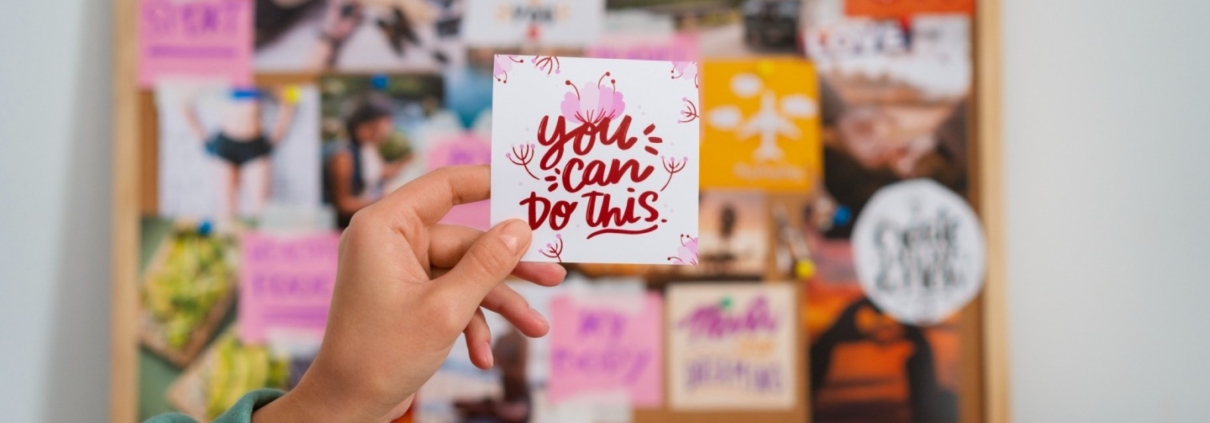Creating a Vision Board to Stay Focused on Your Dreams
A vision board is a simple but powerful tool to keep your goals visible, specific, and emotionally engaging. By curating images, words, and symbols that represent your desired future, you train your mind to notice opportunities and stay motivated. When your priorities are captured in one inspiring place, daily distractions lose their grip and your actions align more naturally with your intentions.
Why a Vision Board Works
Visual cues influence attention and behavior. Seeing your goals every day reinforces commitment, reduces decision fatigue, and helps you course-correct quickly when you drift. This is especially useful when a long-term dream requires months of consistent effort. The board becomes a north star: a visual reminder of who you are becoming and why the work matters.
How to Create a Vision Board (Step by Step)
- Clarify your categories: Choose 3–6 life areas to feature—career, health, finances, learning, relationships, lifestyle, creativity, or service.
- Define outcomes: For each area, write one clear outcome and a feeling you want to experience when it’s achieved. Specificity prevents clutter.
- Collect visuals: Gather images, phrases, quotes, and symbols that capture those outcomes and feelings. Use magazines, prints, or digital sources.
- Select a base: Poster board, cork board, foam board, or a digital canvas. Pick a size that fits where you’ll actually see it daily.
- Compose intentionally: Place the most important goals near the center. Group related items. Leave whitespace so the board feels calm, not chaotic.
- Add action anchors: Include small text cues like “10k steps daily,” “deep work 2 hrs,” or “weekly outreach.” These tie inspiration to behavior.
- Place it strategically: Display it where your eyes land every morning and evening—near your desk, dressing area, or lock screen if digital.
- Review and refresh: Do a 60-second daily check-in and a deeper monthly update. Swap items as goals evolve.
Materials and Formats
Keep it simple: scissors, glue, tape, markers, and a sturdy board are enough. If you go digital, use any collage app or slide tool and set it as your phone or desktop wallpaper. Hybrid boards work too: build a physical core and keep a rotating digital version for travel.
Ideas for Creating a Vision Board
- Theme boards: Dedicate a board to one big goal—like a career transition or marathon prep—to eliminate visual noise.
- Timeline layout: Arrange elements by quarter (Q1–Q4) so progress feels paced and achievable.
- Identity-centric: Feature statements like “I am a consistent creator” alongside imagery of the lifestyle that identity produces.
- Milestone ladders: For each dream, add 3–5 stepping stones (first sale, first 10 clients, first 5k run) to keep momentum measurable.
- Value anchors: Include words that define how you’ll pursue goals—clarity, courage, craft, kindness—so the journey matches your ethics.
- Energy board: Curate colors and images that evoke the feelings you want daily—calm blues for focus, vibrant tones for bold action.
- Micro-goal cards: Pin small cards you can remove once completed; the act of removing builds satisfaction and momentum.
Daily Rituals to Keep You Focused
Pair the board with a brief ritual. Each morning, scan the center items and choose one action that moves a goal forward. In the evening, spend a minute acknowledging progress, no matter how small. This tiny loop connects vision with execution and prevents the board from becoming passive decoration.
Common Mistakes to Avoid
- Too many items: Overcrowding dilutes focus. Curate ruthlessly.
- Vague imagery: Choose visuals that clearly represent a measurable outcome.
- No behavior link: Inspiration without action anchors leads to wishful thinking.
- Hidden placement: If you rarely see it, it won’t work. Visibility is non-negotiable.
- Never updating: Your goals evolve; your board should, too.
Tracking Progress Without Killing Inspiration
Blend art with accountability. Add a small corner for monthly checkmarks or a mini habit tracker. Keep it lightweight so the board stays inviting. If detailed tracking is needed, use a separate planner and let the board remain a clear, motivating snapshot of your destination.
When to Use a Digital Vision Board
Choose digital if you travel often, love minimalist setups, or enjoy changing themes seasonally. Create a mobile-friendly version that fits your lock screen. Use folders for alternate boards—career, wellness, learning—and rotate weekly to keep attention fresh.
Refreshing Your Board
Set a recurring 30-minute appointment each month to remove completed milestones, replace outdated imagery, and add new ideas for creating a vision board that reflects current priorities. This keeps the board alive and aligned with your next chapter.
Conclusion
Making your dreams tangible changes how you show up each day. By learning how to create a vision board with clear outcomes, action anchors, and thoughtful design, you convert inspiration into momentum. Keep it visible, review it briefly every day, update it monthly, and let it guide your focus toward the life you’re actively building.



Leave a Reply
Want to join the discussion?Feel free to contribute!